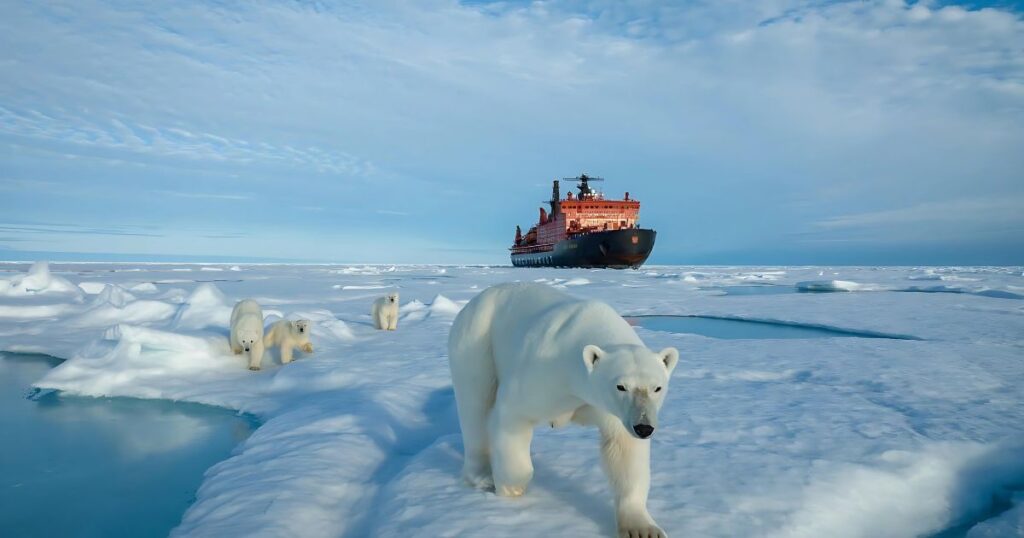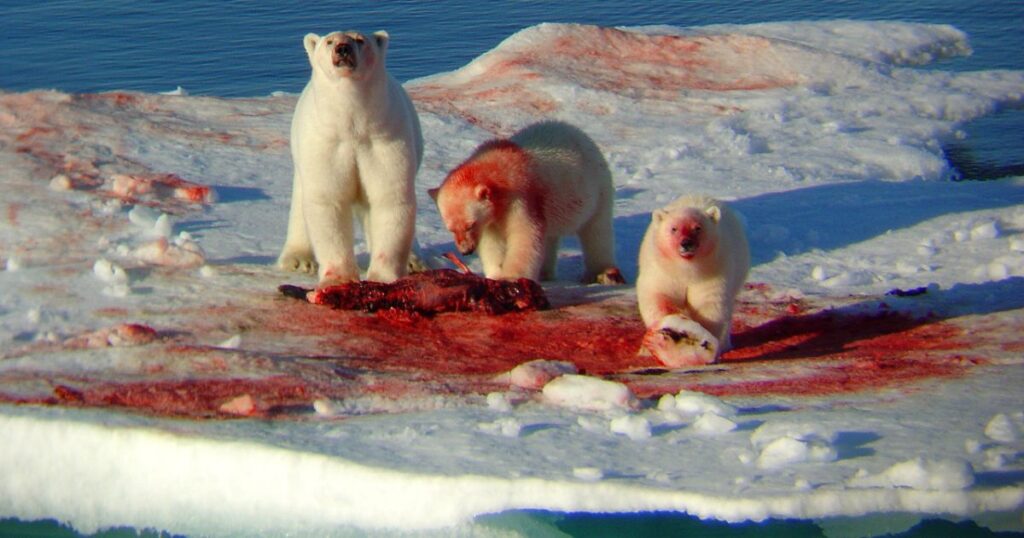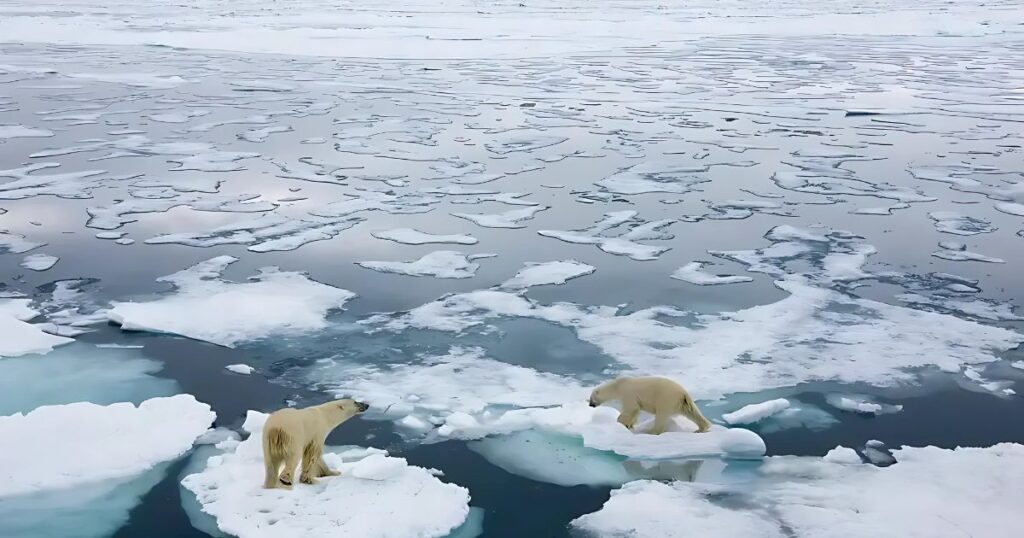International Polar Bear Day 2024
Every year on February 27th, people around the world observe International Polar Bear Day to bring attention to the state of polar bear conservation. Because of habitat loss in the Arctic and climate change, polar bears are becoming more and more vulnerable. International Polar Bear Day promotes education and activism to help protect these iconic animals.
Read More: Digital News Planet
International Polar Bear Day 2024: Background on Polar Bears
Polar bears (Ursus maritimus) are marine mammals that live in the circumpolar Arctic region. They are the largest bear species and are perfectly adapted to their frigid habitat with their thick white fur and layers of fat for insulation.
Sea ice is essential to polar bear hunting because it conceals their main meal, bearded and ringed seals. They ambush seals by waiting for them to surface near ice holes so they may get air. Since polar bears live mostly on the ice sheets of the ocean rather than on land, they are categorized as marine mammals.

Some key facts about polar bears:
- There are estimated to be around 26,000 polar bears across 19 population groups.
- The IUCN Red List has listed them as Threatened Species.
- A polar bear’s weight can reach 1,600 pounds.
- They are native to the Arctic Circle area surrounding the North Pole. Russia, Alaska, Canada, Greenland, and Norway all have polar bear populations.
- Polar bears cover huge territories and can swim continuously for over 250 miles.
- To conserve energy in their harsh climate, polar bears only have to eat one large meal of seal fat every 5-6 days.

Threats Facing Polar Bears
Polar bears today are threatened primarily by climate change and melting Arctic sea ice. With sufficient sea ice cover, the bears can effectively hunt seals. Other threats include:
- Habitat degradation – Expanding Arctic industries like oil and gas drilling encroach on polar bear territory.
- Pollution – Industrial contaminants accumulate in the Arctic food chain.
- Overharvesting – Hunting and global trade in polar bear parts occurs despite protections.
- Starvation – Diminishing access to seal prey leads to malnutrition and lower birth rates.
If sea ice loss continues at current rates, experts predict that by 2050, up to two thirds of the world’s polar bear population may disappear. Some groups have already seen marked declines, hinting at this troubling future.
Why International Polar Bear Day Matters
International Polar Bear Day is championed by Polar Bears International (PBI). PBI is a nonprofit dedicated to polar bear conservation through research and education.
The day is important because it:
- Raises awareness – Getting the word out about polar bears’ predicament leads to greater environmental consciousness and political action.
- Encourages activism – Lectures, fundraisers, and zoo events motivate people to support conservation efforts.
- Provides education – Activities and media highlight polar bear facts and the urgent need for habitat protection.
- Offers solutions – Discussing conservation research, carbon footprint reduction, and sustainability models give people ways to help address the challenges facing polar bears.
Origins of International Polar Bear Day
International Polar Bear Day was created in 2004 by American polar bear researcher Steven Amstrup. After over 30 years studying polar bears in Alaska, Amstrup wanted to increase public knowledge about the risks climate change posed to polar bear survival.
Since the week of February 27th is usually when the Arctic sea ice reaches its largest extent of the year, he decided to have the event on that day. The day has been held annually since then, often in collaboration with PBI as the central organizing body.
February 27th is now recognized as International Polar Bear Day around the world. Zoos, museums, schools, and conservation groups host educational activities and fundraisers.
How Climate Change Threatens Polar Bears
Experts consider climate change the most significant threat facing polar bears in the 21st century. Here’s how warming temperatures are impacting polar bear populations:

- Melting sea ice – Diminishing ice reduces polar bears’ access to seals for hunting and lowers their stored fat reserves.
- Nutritional stress – With limited access to their primary food source, polar bears are experiencing malnutrition and lower reproduction rates.
- Reduced habitat – Less ice means polar bears have less room to roam and fewer places to build dens for birthing cubs.
- Increased energy use – Walking or swimming further to traverse stretched-out habitats burns more calories they can’t afford to lose.
- Forced human interaction – As bears venture closer to human settlements for food, they’re being killed in self-defense or accidents.
- Population decline – Scientists estimate polar bear numbers could drop by 30-50% in coming decades as sea ice loss accelerates.
- Extinction risk – A few populations are already suffering, and without significant action, polar bears could become extinct within 100 years.
Climate warming is caused by excess greenhouse gas emissions from human activities – mainly the burning of fossil fuels. These emissions are quickly transforming the polar bear’s icy ecology.
Recent Research on Polar Bears and Climate Change
Many researchers worldwide are busy studying polar bears and how they react to reduced sea ice. Recent studies have found:
- Polar bears in the Southern Beaufort Sea off Alaska have seen survival rates plummet in the last decade as sea ice declines have accelerated.
- Due to nutritional stress, female polar bears in Western Hudson Bay have fewer cubs. Over a 30-year period, the population could decrease by 30%.
- Models show the Chukchi Sea population is susceptible to ice loss, and polar bear abundance could fall 80% in coming years without sea ice recovery.
- All 19 distinct polar bear groups are projected to be adversely impacted by mid-century if greenhouse gas emissions are not curtailed.
- More polar bear dens are collapsing as rain increases and weakens snowpack, putting cubs at higher risk.

This research highlights how vital sea ice is to polar bear health and the existential threat warming temperatures pose. The science underscores the urgent need for climate action on International Polar Bear Day and year-round.
Celebrating International Polar Bear Day
People around the world celebrate International Polar Bear Day in various educational, enlightening, and even entertaining ways:
- Zoos and aquariums host polar bear enrichment activities and feedings to highlight conservation efforts.
- Museums incorporate polar bear exhibits, displays, and short films to share facts in engaging formats.
- Classrooms have polar bear lesson plans and art projects to teach students about these iconic Arctic animals.
- Conservation groups organize fundraisers such as polar bear plunges, races, and art auctions to support ongoing research.
- Social media campaigns (#IntlPolarBearDay) raise online awareness and provide tips for getting involved.
- TV specials and documentaries spotlight scientists studying polar bears in their natural habitat.
- Restaurants add polar bear-themed cupcakes, cookies, or cocktails to their menu for the day.
These events all direct public attention toward addressing the serious challenges of climate change in the Arctic.
What You Can Do to Help Polar Bears
Here are five simple actions you can take on International Polar Bear Day or any day to support polar bear conservation:
1. Reduce your carbon footprint – Walk, bike, or use public transport when possible, drive a fuel-efficient car, and minimize air travel to lower greenhouse gas emissions.
2. Support green energy – Advocate for policies and projects that advance renewable energy like wind and solar to diminish the use of fossil fuels.
3. Use less plastic – Cut down on single-use plastics that too often end up as ocean pollution, harming marine life.
4. Donate to a conservation group – Funds go towards ongoing research, education campaigns, and advocacy to protect polar bears.
5. Spread awareness – Share facts about polar bears plus warnings about climate change with your social network to magnify the message.
By addressing the root causes of Arctic habitat loss, anyone can help give polar bears a brighter future.
The Future of Polar Bears
Polar bears have withstood warming periods in the past, but the current pace of change exceeds anything in the species’ evolutionary history. To preserve polar bears for future generations, societies globally must curb greenhouse gas emissions substantially while protecting critical habitats.
Protecting the remaining populations from overhunting and industrial expansion is also crucial. With coordinated action, it can restrain sea ice melt and avoid a catastrophic collapse in polar bear numbers.
International Polar Bear Day offers a yearly reminder of how fragile the polar bear’s icy habitat has become. The hope is that greater awareness leads to bolder changes worldwide to safeguard these beloved Arctic giants. Their future and ours are intertwined in the face of climate change.
FAQs:
1: Why is polar bear Day celebrated?
- Polar Bear Day is celebrated annually on February 27th to raise awareness about polar bear conservation. The day promotes education and activism to protect polar bears threatened by climate change and habitat loss.
2: What day is bear day?
- International Polar Bear Day is on February 27th each year. Other bear-related awareness days are World Panda Day on March 16th and International Bear Day on October 26th.
3: What is the date of polar bears?
- There is no specific date associated with polar bears. But February 27th is designated International Polar Bear Day to bring attention to protecting the species.
4: Where is Polar Bear International?
- Polar Bears International is headquartered in Bozeman, Montana, United States. The nonprofit is dedicated to polar bear conservation worldwide.
5: What is the international name of a polar bear?
- Ursus maritimus is the scientific name for the polar bear. This Latin name means “maritime bear,” referencing its connection to the ocean and sea ice habitat.
6: What is the meaning of polar bear International?
- Polar Bears International aims to conserve polar bears and their Arctic habitat by supporting research, education, and action on climate change.
7: What is the polar bear a symbol of?
- The polar bear is a widespread symbol of the Arctic. Its white fur and icy habitat make it an icon for climate change impacts.
8: Who is the founder of a polar bear?
- Polar bears as a species evolved over hundreds of thousands of years. There is no single founder of the polar bear species.
9: Who started the polar bear?
- American polar bear researcher Steven Amstrup initiated International Polar Bear Day in 2004 to increase public awareness about climate threats to polar bears.
10: What religion is a polar bear?
- Polar bears do not have any religious affiliations. Some indigenous cultural traditions have portrayed bears as spirit animals.
11: Who has a polar bear logo?
- The World Wildlife Fund (WWF) has used the polar bear as its logo since its founding in 1961. Coca-Cola also uses an animated polar bear in holiday advertising.
12: Who is the famous polar bear?
- Knut was the most famous polar bear, born in captivity in the Berlin Zoo in 2006. He was featured internationally in media coverage as a cub.
13: Are polar bears special?
- Yes, polar bears are considered a charismatic mega-fauna and keystone Arctic species. Their fat-rich milk, fur coloration, and hunting skills are unique adaptations.
14: Is a polar bear called an ice bear?
- Yes, polar bears are sometimes called ice bears, particularly in Europe and Russia, because they rely on Arctic sea ice for survival.
15: Do polar bears have names?
- Polar bears in the wild do not have individual names. But polar bears in captivity are often given names by zookeepers and aquarium staff caring for them.





